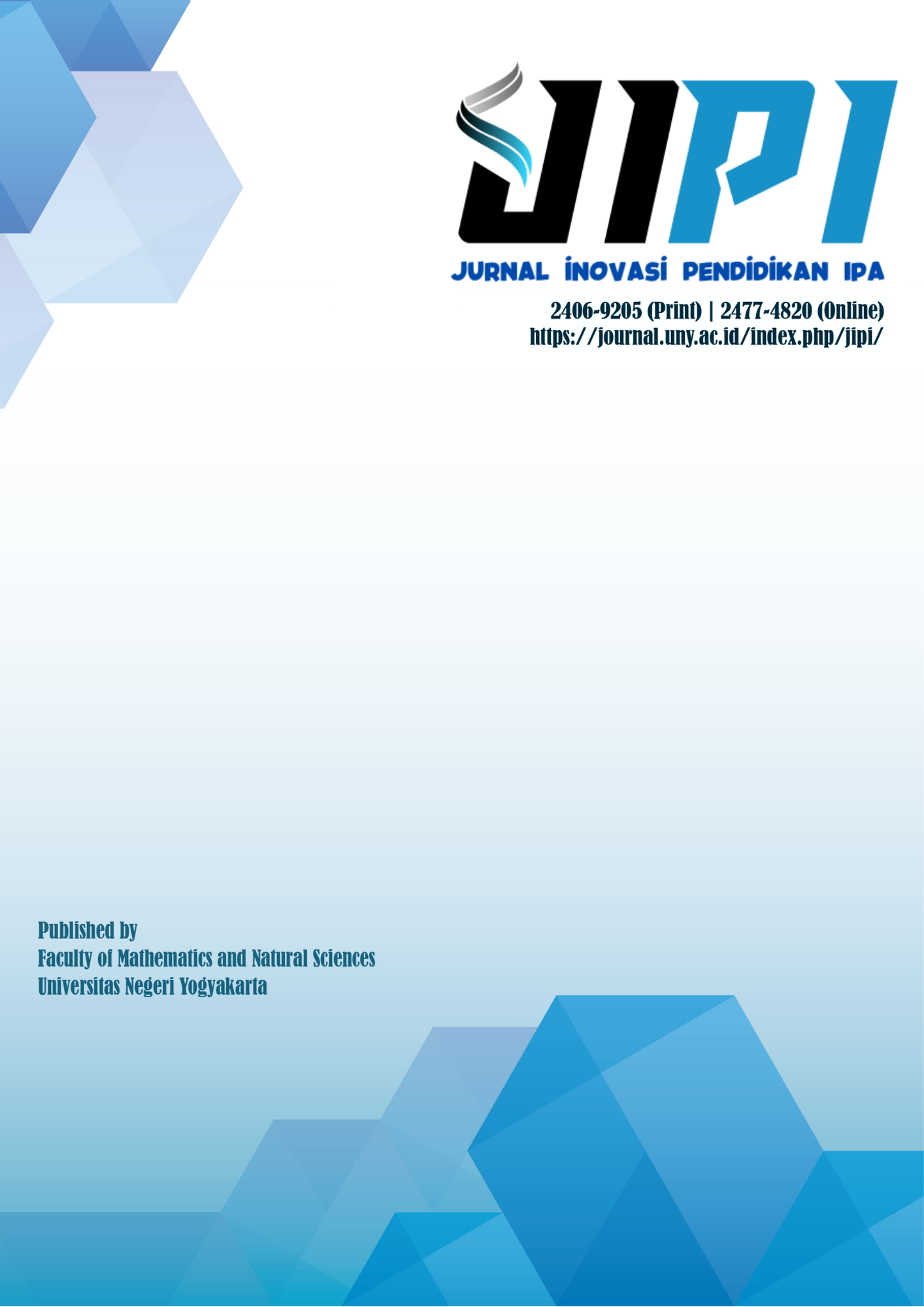Analisis Iteman dan model Rasch pada pengembangan instrumen kemampuan berpikir kritis peserta didik sekolah menengah kejuruan
DOI:
https://doi.org/10.21831/jipi.v4i2.21442Keywords:
berpikir kritis, instrumen, iteman, model Rasch, critical thinking, instruments, rasch modelAbstract
Tujuan penelitian ini menganalisis instrumen kemampuan berpikir kritis. Penelitian ini merupakan penelitian kuantitatif. Data diperoleh dengan mengembangkan instrumen penilaian kemampuan berpikir kritis. Responden sebanyak 90 peserta didik yang diambil dari 3 SMK yang ada di kota Surakarta. Analisis data menggunakan perangkat lunak (software) analisis Iteman versi 3.0 dan Winstep versi 3.73. Metode yang digunakan dalam analisis ini yaitu metode tes klasik yaitu Iteman dan pemodelan Rasch. Hasil analisis dengan pemodelan Iteman diperoleh nilai Alpha Cronbach 0,80 berarti reliabilitas dari soal ini tinggi. Sedangkan dengan model Rasch Alpha Cronbach 0,74 berarti reliabilitas antara person dan item, sedangkan reliabilitas item 0,95 yang berarti item instrumen sangat bagus. Validitas item 0,93 menunjukkan soal dapat mengukur dan diperkuat dengan separation 4,34 item soal ini mempunyai sebaran respon yang baik. Instrumen kemampuan berpikir kritis dapat digunakan untuk penelitian selanjutnya.
Iteman and rasch model analysis on the development of critical thinking instruments for vocational school students
Abstract
The aimed of this study is to analyze the instrument of critical thinking skills. This research is quantitative research. Data was obtained by developing instruments for assessing critical thinking skills. Respondents were 90 students that taken from 3 Vocational Schools in Surakarta. Data analysis was using Iteman analysis software version 3.0 and Winstep version 3.73. The method used in this analysis were the classic test method, iteman and rasch models. The results of the analysis with iteman modeling obtained the Alpha Cronbach value of 0,800 means that the reliability of this problem was high. Whereas with the Rasch Alpha Cronbach model 0,74 means the reliability between person and item, while the reliability of the item is 0.95 which means the instrument item was very good. The validity of item 0.93 shows that the problem can be measured and reinforced with separation 4,34 items this question has a good distribution of responses. The instrument of critical thinking skills can be used for further research.
References
Arikunto, S. (2016). Dasar-dasar evaluasi pendidikan (2nd ed.). Jakarta: Bumi Aksara.
Azwar, S. (2015). Reliabilitas dan validitas. Yogjakarta: Pustaka Pelajar.
Bond, T. G., & Fox, C. M. (2007). Applying the rasch model: fundamental measurement in the human sciences, Second Edition. Journal of Educational Measurement, 2(2nd), 360. https://doi.org/10.1111/j.1745-3984.2003.tb01103.x
Chan, S. W., Ismail, Z., & Sumintono, B. (2014). A rasch model analysis on secondary students' statistical reasoning ability in descriptive statistics. Procedia - Social and Behavioral Sciences, 129, 133–139. https://doi.org/10.1016/j.sbspro.2014.03.658
Facione, P. A. (2011a). Critical thinking : What it is and why it counts.
Facione, P. A. (2011b). Critical thinking:What it is and why it counts. In Insight Assessment.
Gall, M. D., Gall, J. P., & Borg, W. R. (2007). An Introduction to educational design research. East, 129.
Hadam, S., Rahayu, N., & Nur Ariyadi, A. (2018). 10 Langkah Revitalisasi SMK. Jakarta: Direktorat Pembinaan Sekolah Menengah Kejuruan Direktorat Jenderal Pendidikan Dasar Dan Menengah Kementrian Pendidikan dan Kebudayaan.
Kompas. (2017, November 14). Lulusan vokasi menganggur. Kompas. Jakarta.
Lai, E. R. (2011). Critical thinking : A literature review research Report, (June).
Morganna, K., Pinto, P., Federal, U., & Grande, R. (2007). Development and validation of an instrument for measuring patient satisfaction with physical therapy, 369–376.
Ngalimun. (2018). Evaluasi dan penilaian pembelajaran. Yogjakarta: Parama Ilmu.
Peter, A., & Facione, P. A. (1989). The California critical thinking skills test -- college level technical report # 4 Interpreting the CCTST , Group Norms , and Sub-Scores.
Schwab, K. (2016). The future of jobs employment,skill and workforce stategy for the fourth industry revolution.
Starkey, L. (2009). Critical thinking skills success tes kemampuan berpikir kritis dalam 20 menit. Yogjakarta: Bookmarks.
Sudjana. (2005). Penilaian hasil proses belajar mengajar. Bandung: PT Remaja Rosdakarya.
Sumintono, B., & Widhiarso, W. (2014). Aplikasi model rasch untuk penelitian ilmu-ilmu sosial (2nd ed.). Cimahi: Trim Komunikata Publishing House.
Sumintono, B., & Widhiarso, W. (2015). Aplikasi pemodelan rasch pada assessment pendidikan. Cimahi: Trim Komunikata Publishing House.
Trilling, B., & Fadel, C. (2009). 21 st century skills. San Francisco: Jossey- Bass.
Zhou, Q., Huang, Q., & Tian, H. (2013). Developing students ' critical thinking skills by task-based learning in chemistry experiment teaching, 4(12), 40–45.
Downloads
Published
How to Cite
Issue
Section
Citation Check
License
The authors submitting a manuscript to this journal agree that, if accepted for publication, copyright publishing of the submission shall be assigned to Jurnal Inovasi Pendidikan IPA (JIPI). However, even though the journal asks for a copyright transfer, the authors retain (or are granted back) significant scholarly rights.
Jurnal Inovasi Pendidikan IPA by http://journal.uny.ac.id/index.php/jipi/index is licensed under a Creative Commons Attribution-ShareAlike 4.0 International License.










